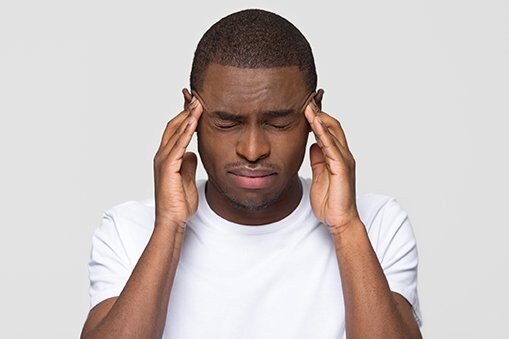
Help! I'm dizzy!
Roseanne Smith, LMH Health Therapy & Wellness
Martha woke up in bed one morning, sat up, and became so dizzy she almost fell. She sat on the edge of her bed, hanging on for dear life until her room stopped spinning. She finally was able to stand up and begin her day. Off and on for the rest of the day, she felt dizzy, nauseated or sometimes both. Martha discovered that if she moved much she had vertigo, so she spent most of her day sitting still in her chair. What should she have done?
Unfortunately, there are many causes for dizziness or vertigo. If you are so dizzy you are unable to get up, dial 911. Otherwise, a good place to begin looking for help is your doctor’s office. Your doctor can look at your medications to see if that may be the cause of your dizziness. They also can examine you for significant medical problems such as stroke or a tumor that could cause vertigo. If these major culprits aren’t the problem, dizziness also can occur due to blood pressure changes, an inner ear problem or a variety of other medical issues.
Return to a safe and active lifestyle with balance and dizziness therapy from LMH Health Therapy & Wellness. Talk with your doctor about a referral for a balance and dizziness evaluation.
The most common cause of intermittent dizziness is Benign Paroxysmal Positional Vertigo or BPPV. It accounts for about 30% of dizziness caused by inner ear problems. People with BPPV move and become dizzy, but the symptoms usually last for less than a minute, at least until you move again. Dizziness resulting from BPPV is usually associated with head movement. People become nauseated and throw up, particularly during the first few days. Some people have this problem once in their lives, but others have this problem once every three days. Symptoms usually last for one to two weeks but the length varies from person to person.
BPPV is a mechanical problem. The inner ear contains the vestibular labyrinth, which is used to orient yourself to gravity and motion. There are a couple of areas in the inner ear that contain calcium carbonate crystals that are attached to tiny hair cells. The weight of the crystals pulls on the hair cells, which sends a signal to your brain and causes you to orient your head to gravity. If you shed too many crystals or fall and hit your head and knock a whole lot off at once, you are more likely to have BPPV. The crystals can then roll into the semicircular canals, usually at night when you are sleeping on your side. Once in the canals, they create havoc with your normal perception of how fast or how far you have moved your head.
Part of the concern about BPPV is that it can also affect balance. When you have BPPV, the labyrinth for one ear is usually affected and sends bogus information to your brain. The brain coordinates information from your vestibular system, vision and sensation from your body to keep you oriented well in space. If one of these systems is malfunctioning, it can affect your balance and lead to falls. Approximately 10% of people over age 65 who have difficulty with balance have BPPV. When the BPPV is treated, their balance also improves.
Who treats BPPV? If you see an otolaryngologist, also known as an ear, nose and throat specialist, they will often have someone in their office who will treat you by performing an Epley maneuver. There are also physical therapists at LMH Health who can perform a detailed evaluation and treat the BPPV using the positioning maneuver.
If you have had BPPV for some time, it is likely that some of your visual reflexes have been affected. A therapist can provide you exercises to help correct those reflexes. Physical therapists are trained to evaluate balance and gait problems, so making an appointment is a great first step toward improving those issues.
Though our friend Martha is fictional, her story is one shared by many patients. It is likely that Martha slept on her side. While sleeping some loose crystals rolled into the semicircular canals, causing her BPPV. When she sat up, the change in position caused the crystals to move and gave her the illusion that the world was spinning. Every time she moved her head, it happened again.
Our recommendation is that Martha make an appointment to see her doctor and then visit a physical therapist who treats patients with BPPV. This will help her on the road to recovery to get back to performing normal activities. Martha has more important things to do than to just sit still at home.
Roseanne Smith is a physical therapist with LMH Health Therapy & Wellness.